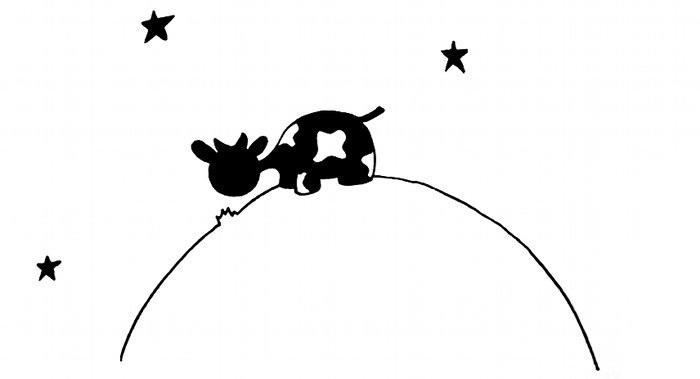
How to decide, when you’re deciding by Chris Peterson SM '13
a pretext for productive procrastination
Today is May 1, the conventional deadline for admitted students to choose their matriculating institution.
By this time, most of these decisions have been made. But, if you’re reading this, chances are you still haven’t completely decided. I shouldn’t give you more things to read as a pretext for further procrastination…but I will.
Here are some blog posts from the archives related to this decision, the one you’re nominally in the process of making. They aren’t intended to persuade you to choose MIT, but to make the best choice for yourself.
Although of course you end up becoming yourself, by me (2016)
Excerpt:
Over the last few weeks I’ve met, emailed, Facebooked, Slacked, or spoken on the phone with many members of the Class of 2020 who are all struggling with the same basic decision as Sam: whether to enroll at MIT or to go somewhere / do something else instead. Typically, these students ascribe this ambiguity to a set of questions they see as unanswered and/or conflicts they see as unsettled. Will they like ‘the culture’ more at MIT or at X? Would they rather be closer to or further from home? How should they evaluate perceived tradeoffs between different curricula, or climates, or financial aid packages? Do they even want to go to college, anymore?
Because these are MIT admits, they usually frame this uncertainty as a problem, which they intend to approach analytically and solve with solid evidence and clear thinking. Sometimes, this works; sometimes, it’s as simple as helping them clarify a matter of fact, like a misunderstanding about whether MIT students have to live in a dorm for all four years (they don’t), or whether MIT students ever study abroad (they do).
But not all disputes are simply murky matters of fact; often, the indeterminacy is more fundamental than that. Such was the case with Sam. He knew both programs very well. He understood their strengths and weaknesses. He knew he could do well at either. The problem, for Sam, was not finding the right answer: the problem, for Sam, and for many students like him, is that there is no right answer, only different ones. His two options were both very good, but very different. He would be working with different people, toward a different goal, in a different place, and at a different age. As a result, he would, at the end of either program, emerge a different person. The question — the hard question — was which of those possible persons he wanted to be.
Why MIT, by Allan K. ’17 (2017)
Excerpt:
none of the reasons i love MIT now are the same as the reasons i originally chose to come to MIT. MIT has changed me so much as a person that it kind of shocks me to look back at how different i was as a freshman. a lot of the things that i thought were really important about college (technical rigor, reputation, weather) turned out not to matter as much as the things i didn’t even think to think about. things like the one class i took on a whim, but it completely changed how i understand the world, and now i’m doing a senior project in that field. or the random conversations i’ve had with neighbors, in the kitchen or in the lounge, late into the morning, talking about everything and learning about everything.
MIT is a place full of “unknown unknowns” — things you don’t even know that you don’t know. it’s also full of people who really care about those things and who will teach you about them. and you’ll make friends with those people along the way.
Changes & Choices, by Afeefah K. ’21 (on her personal blog, when she was a senior!) (2017)
Excerpt:
As far as making a future goes, boy is competition a monster. Often times, it becomes so incredibly easy to fall victim to comparing yourself to others. And suddenly, it becomes this dangerous race. But for what? And for who? And when you realize exactly how pointless that race, something really profound happens. You come to realize that the only person you should be competing with is yourself. The only person you need to be better than is yourself. Because ultimately it’s about improving yourself for yourself.
Why I Chose MIT, by Lydia K. ’14, MEng ’16 (2012)
Excerpt:
The school you choose in the next few days is one of your first big decisions. Some very intelligent people have disagreed with my decision-making process, but I stand by it: follow your heart, as cheesy as it sounds. When it comes to some of your biggest, most consequential life decisions—your priorities, your career path, or, in this blog post, your home for the next four years—it seems to me that what you choose is a lot less important than that you are confident in your decision and prepared to give yourself to it fully. I think where you end up is less important than that you choose it for yourself and that you choose it for reasons you believe in. You’ll be here for the next four (or three or five) years, wherever here is. That’s not very long. It’s going to be as important, as fun, and as life-changing as you make it.

Waiting for Decision Day, by Ceri R. ’16 (2014)
Excerpt:
You all have worked so hard up to this point, finding motivation to excel in high school and slowly figuring out an answer to “how hard can I work, and what am I working towards?” And college is the next step to answering that question and pursuing your dreams and geeking out and figuring out how exactly you can make the world a better place.
So here is my deep life advice, for application day and forevermore: Achieving your dreams takes skill, perseverance, but also a good amount of luck. And who you are, your passions, your goals, your dedication matters so much more than the school you go to. Appreciate who you are right now and the people you surround yourself with, because right now in your life SO MUCH is going to change SO QUICKLY and you want to hold onto these memories as you grow up. Because growing up can be really scary.
Good luck making your decision today, and all the days that follow.